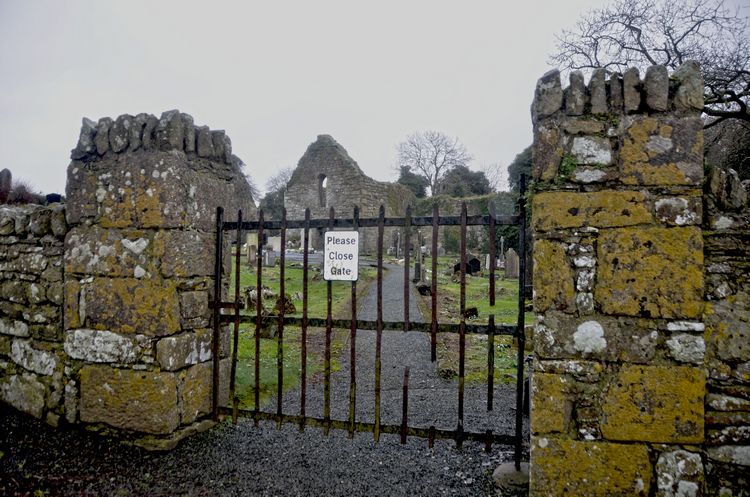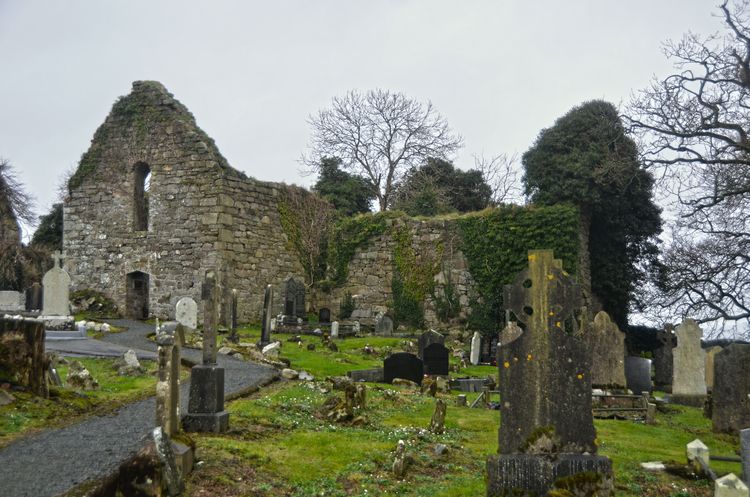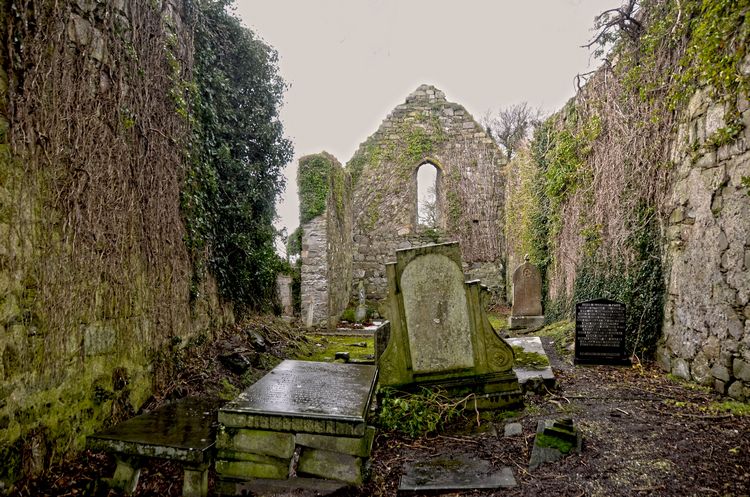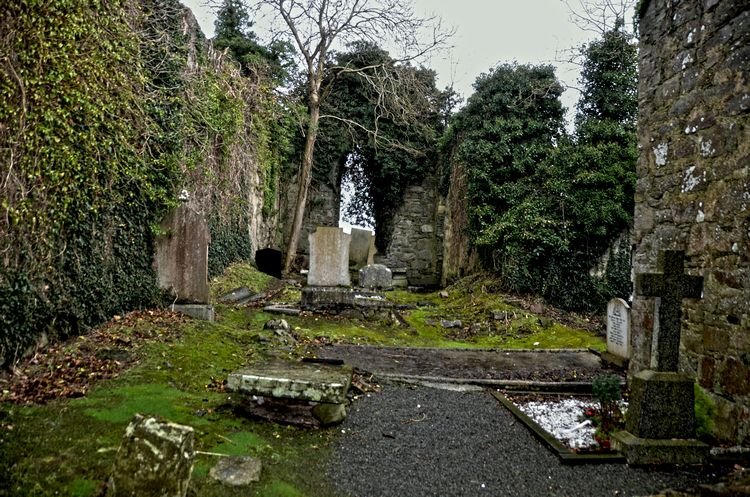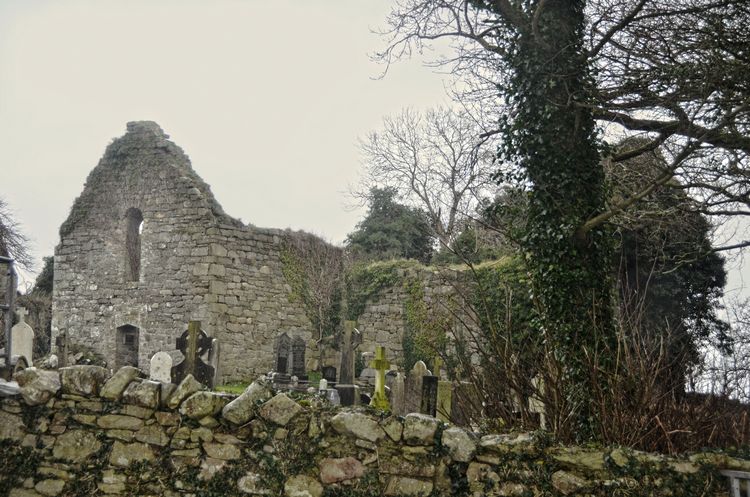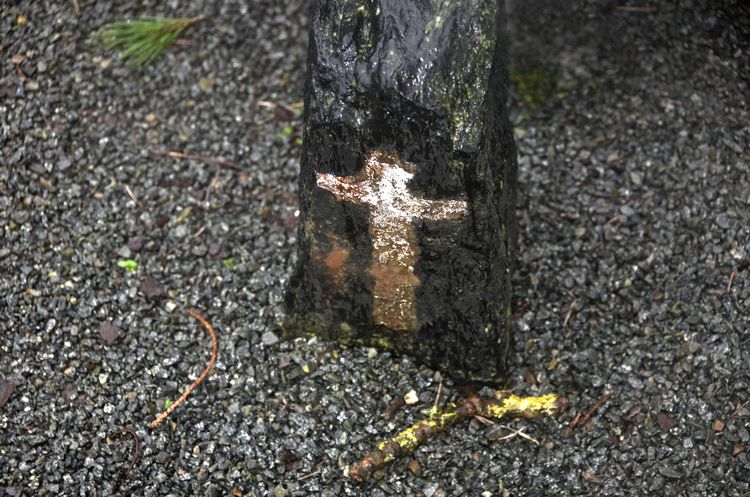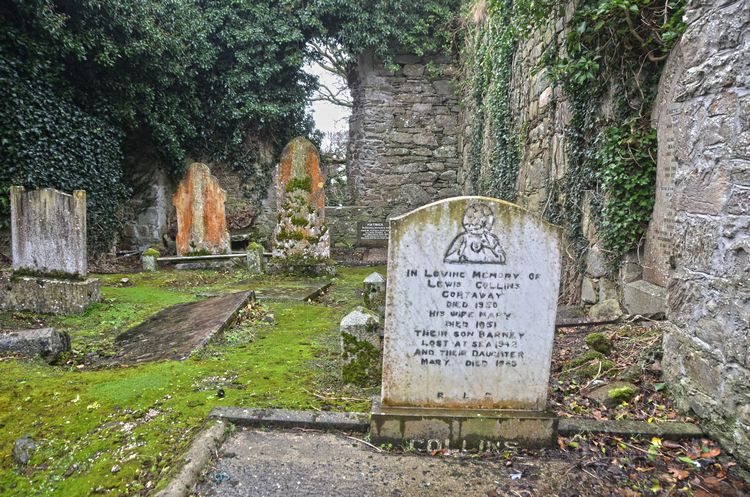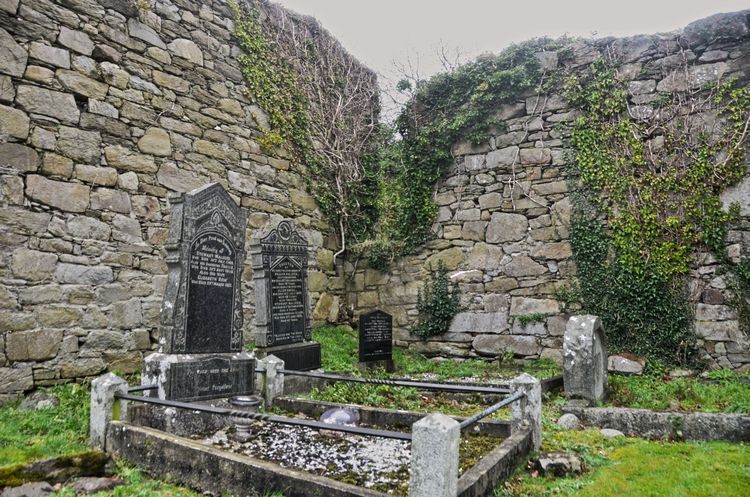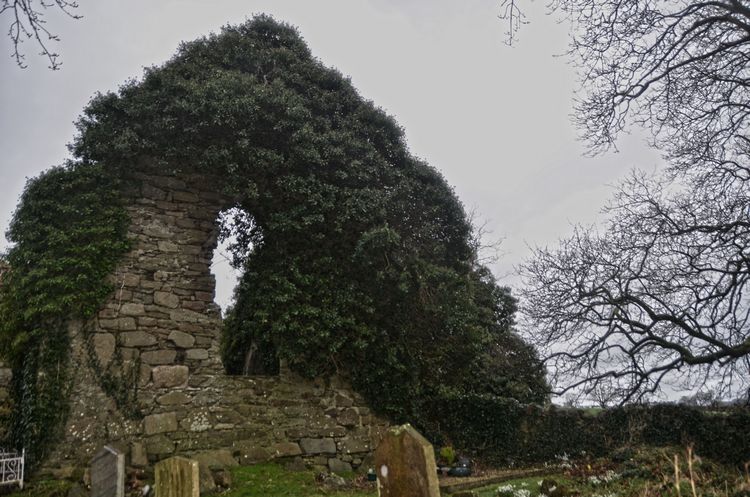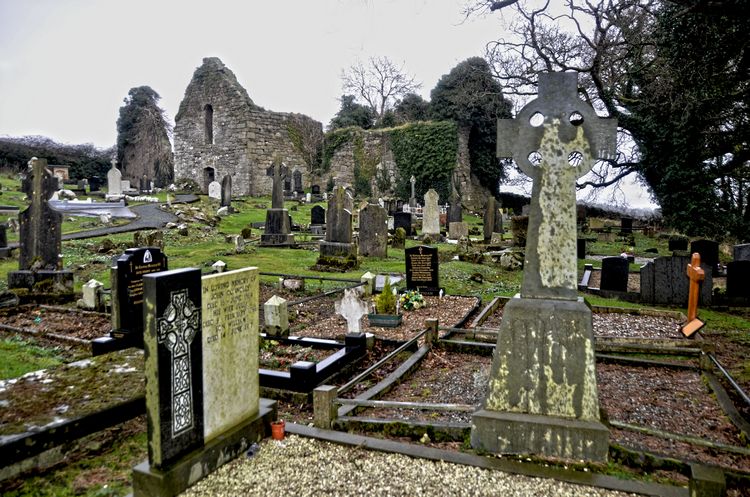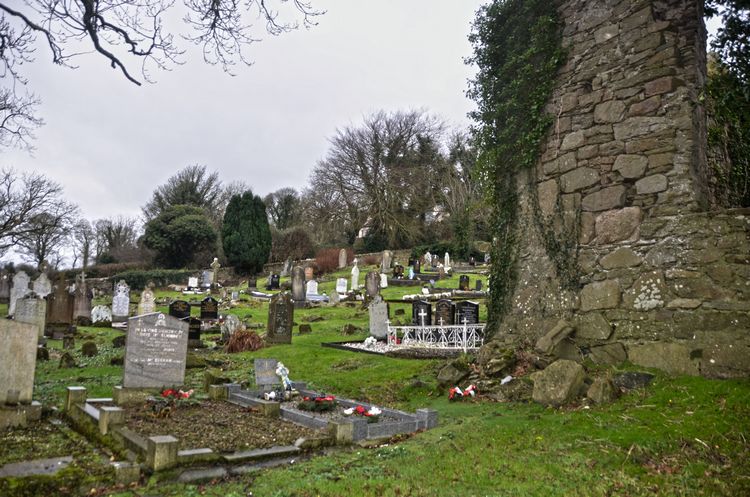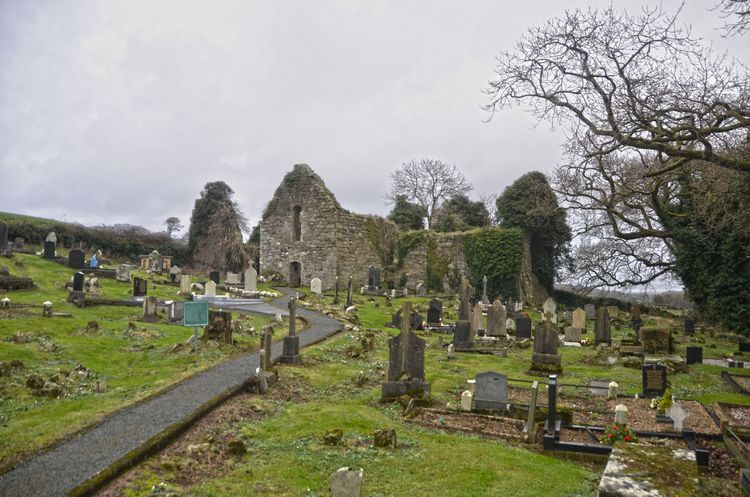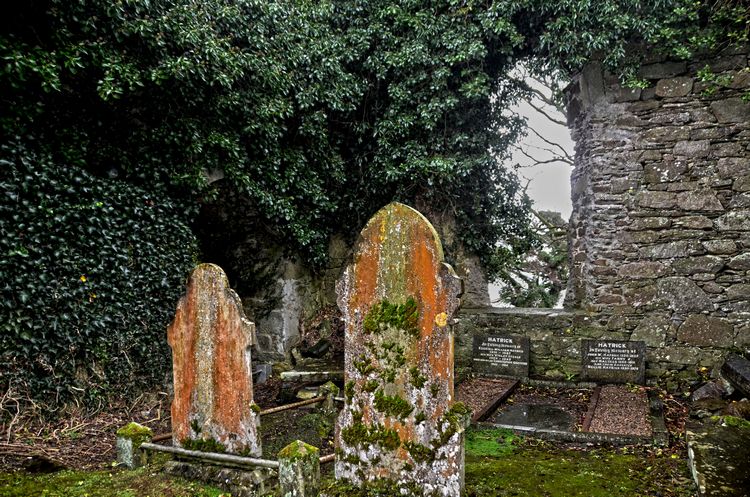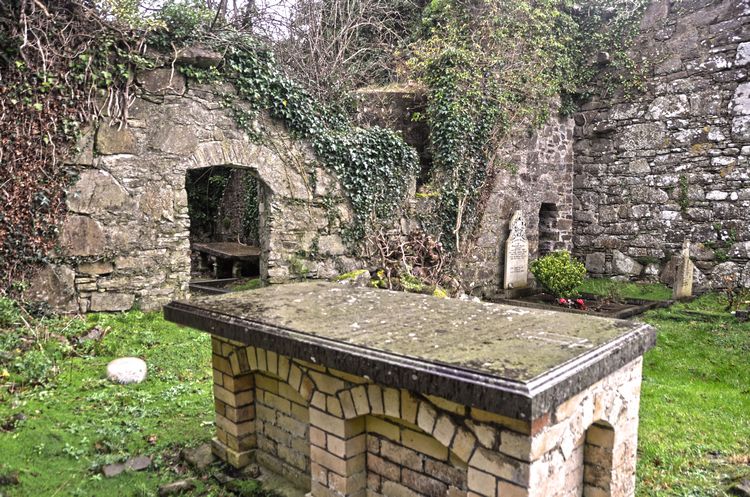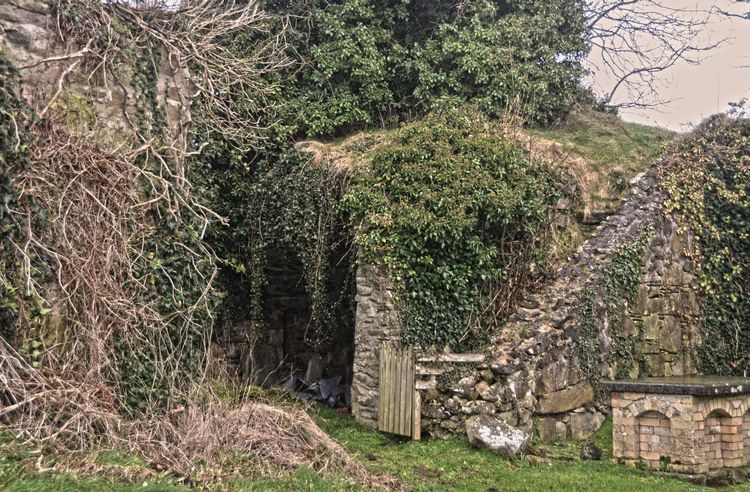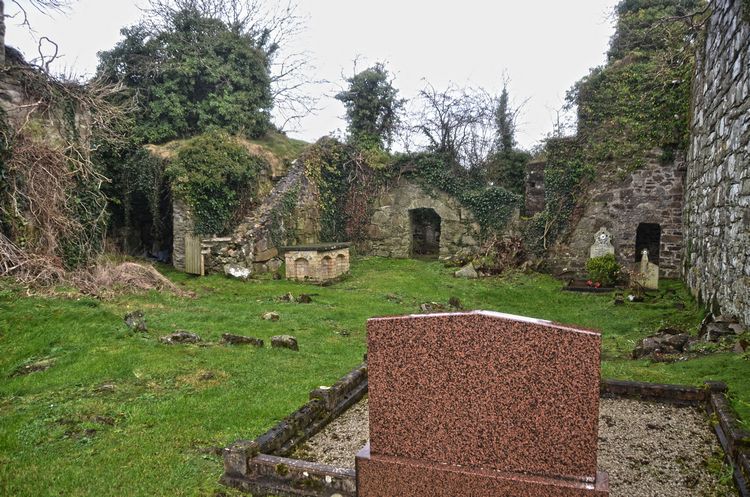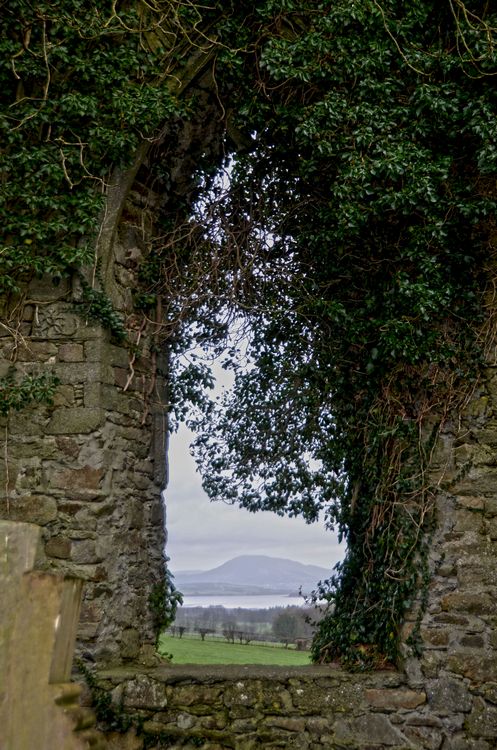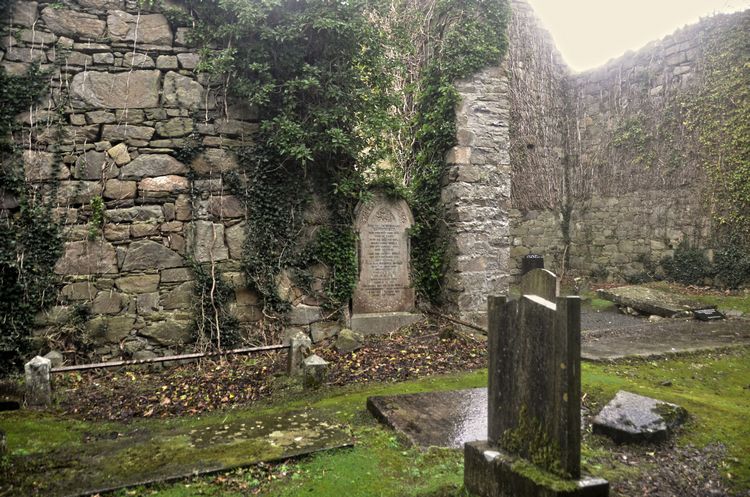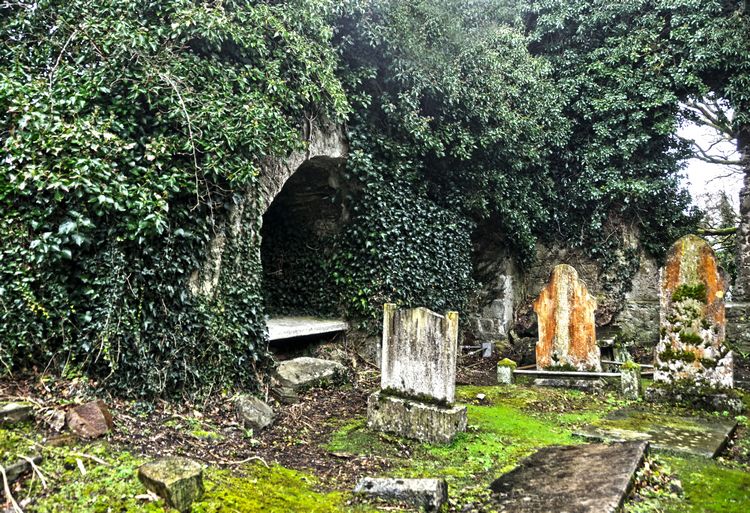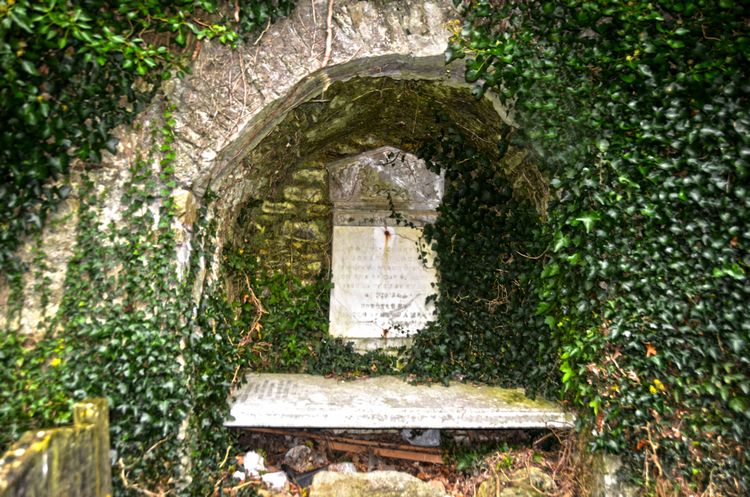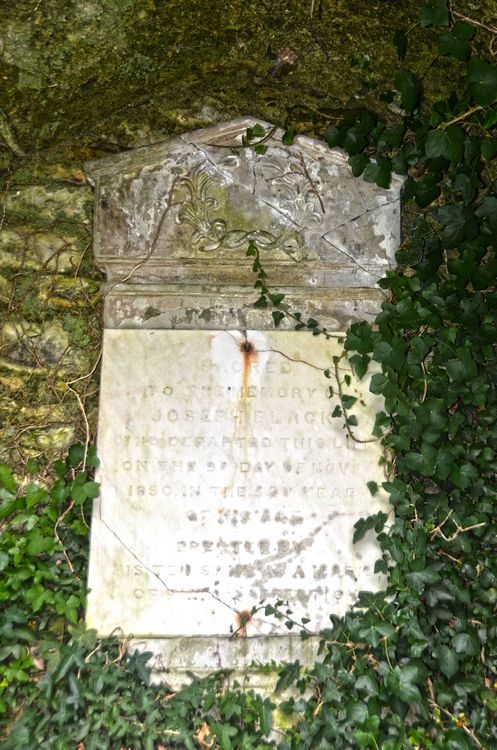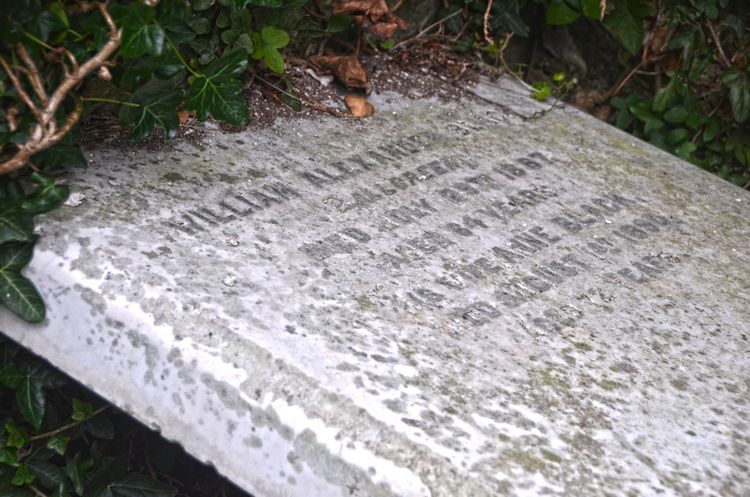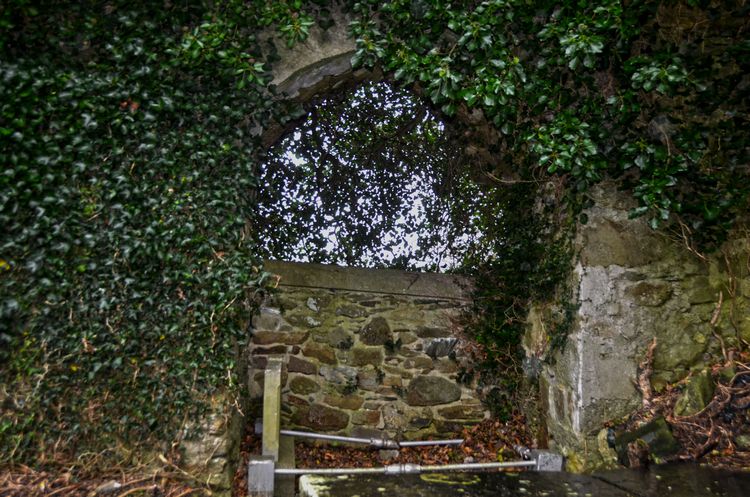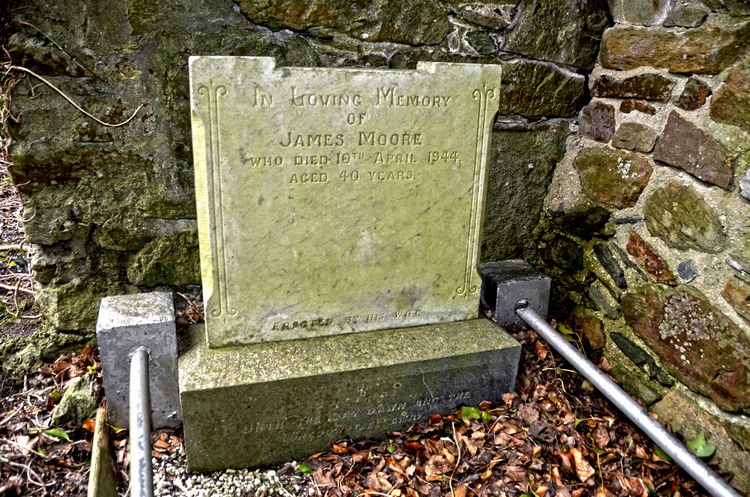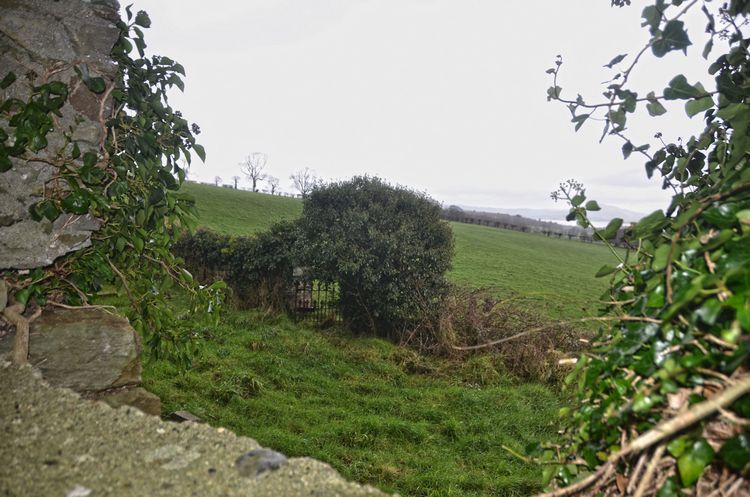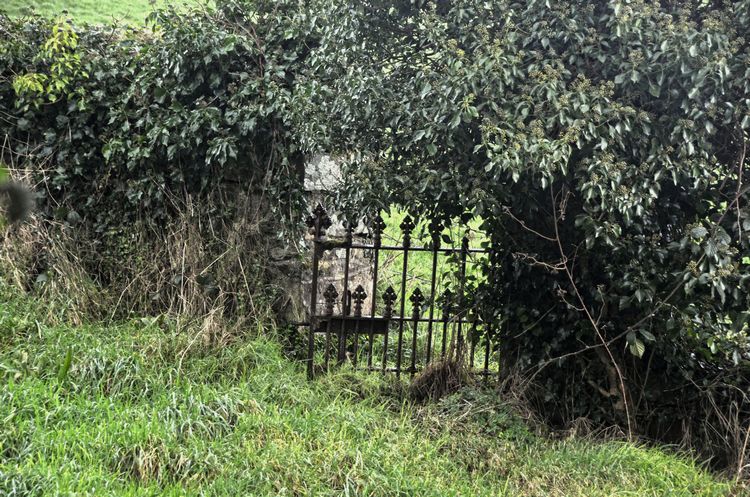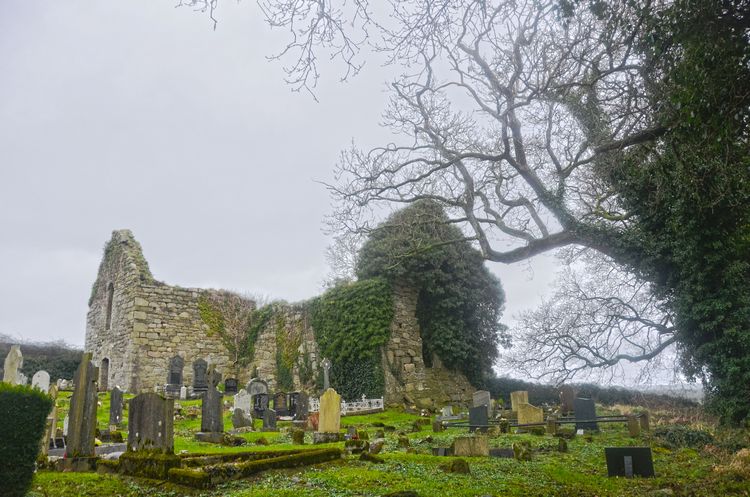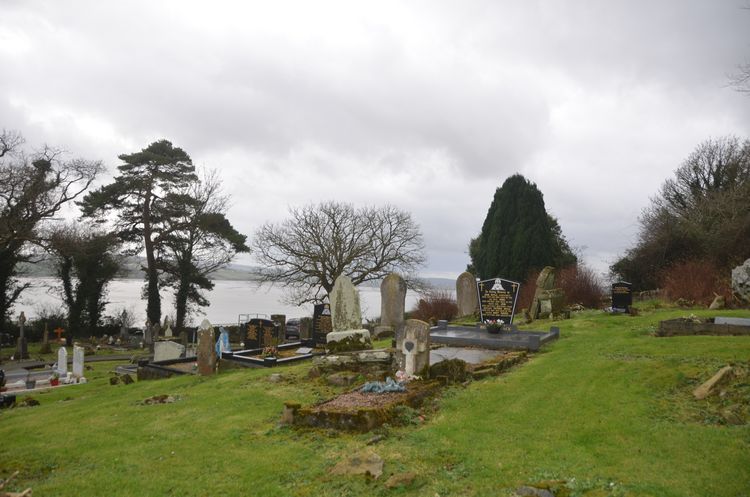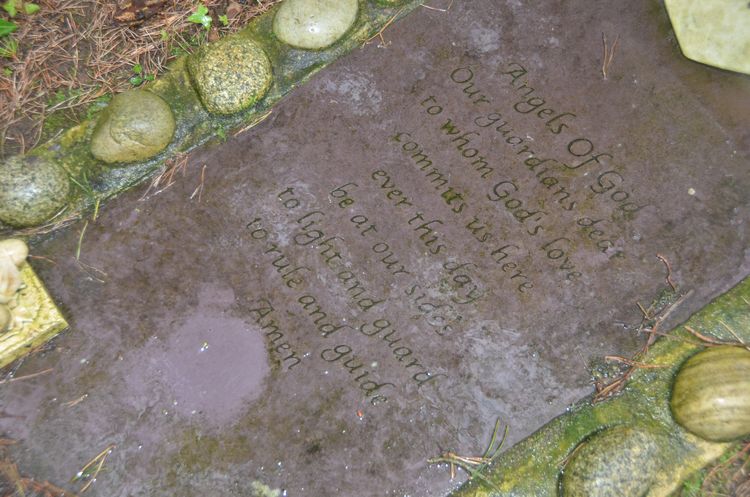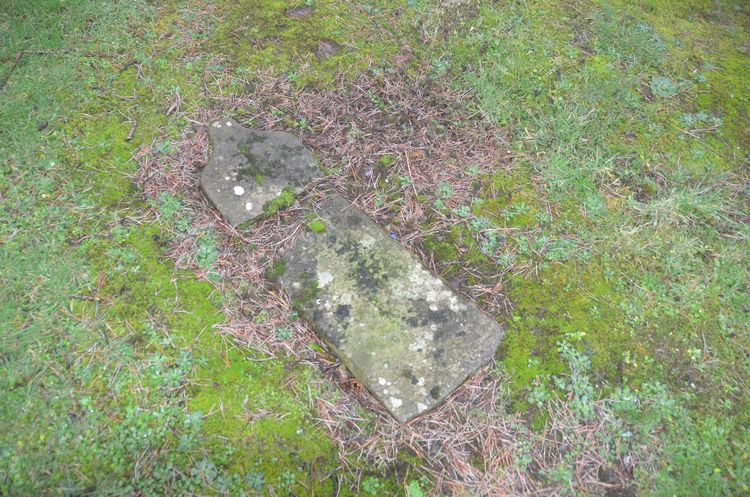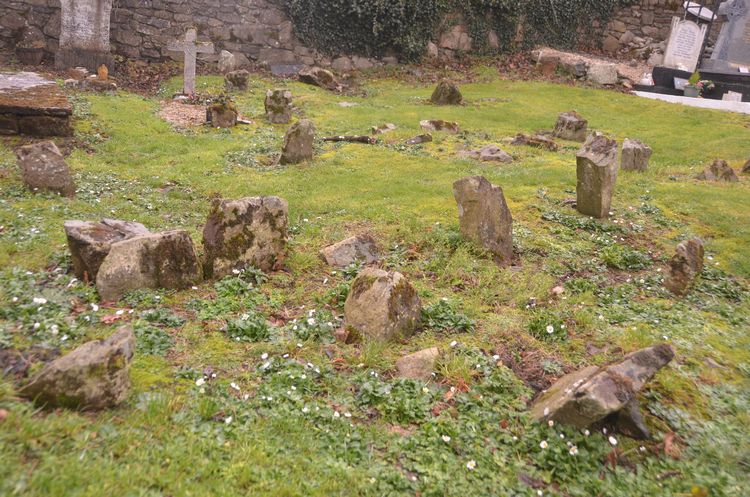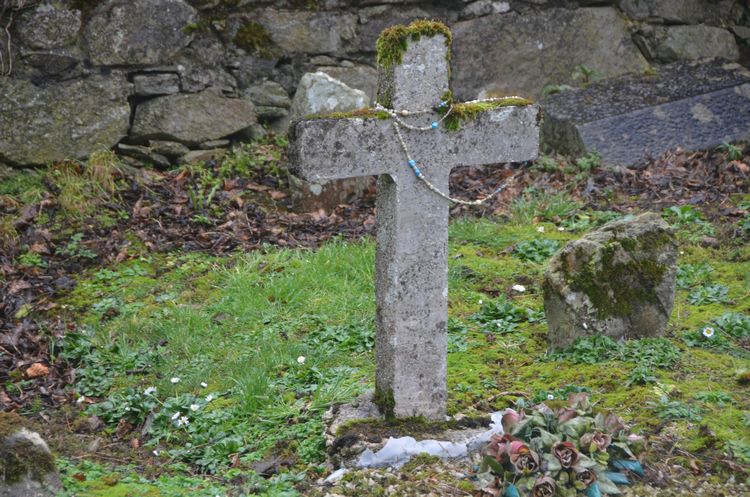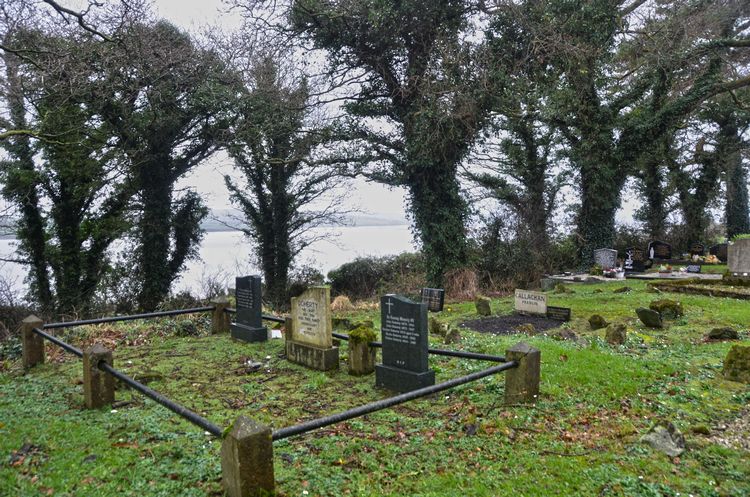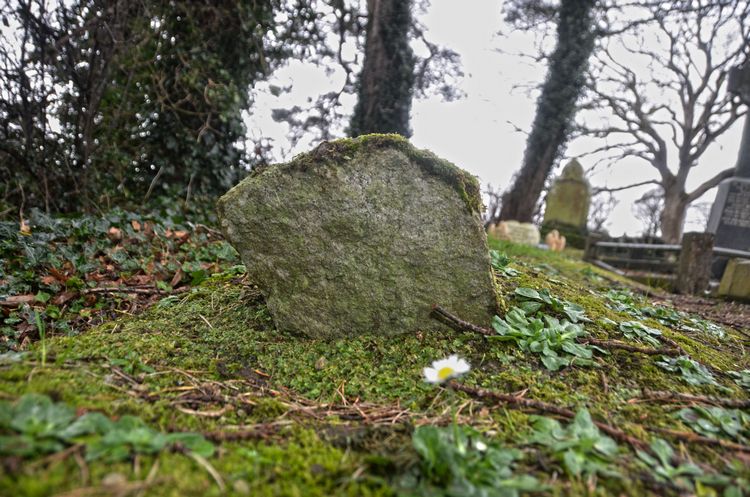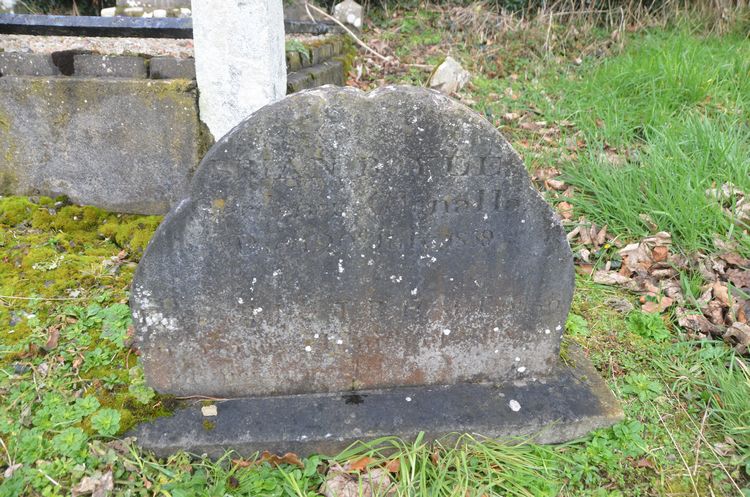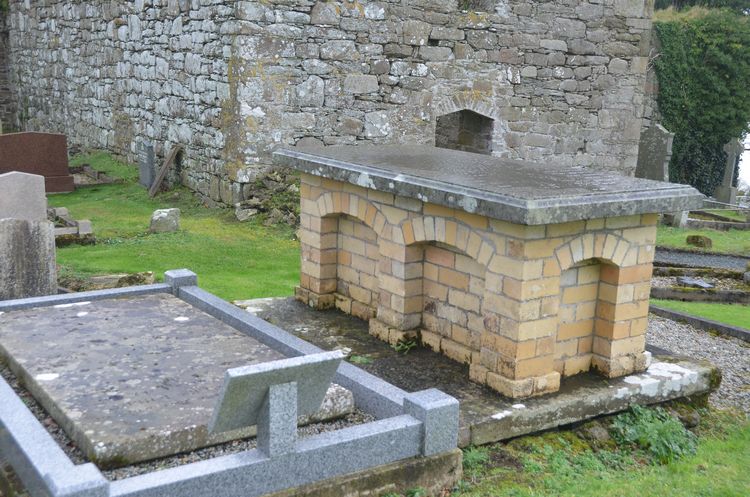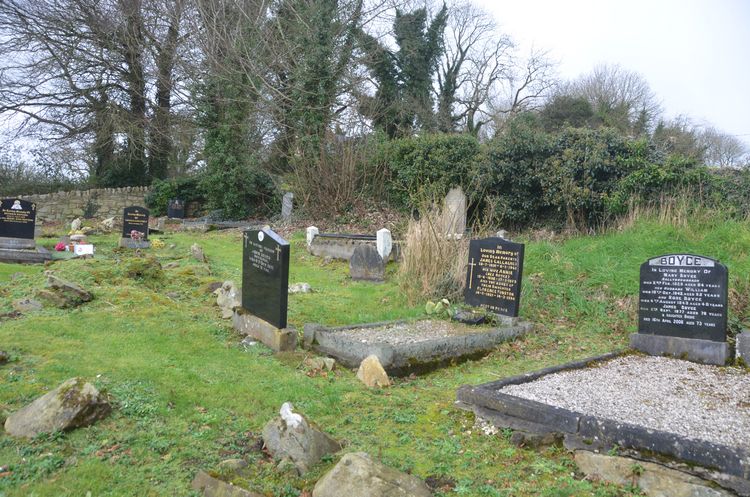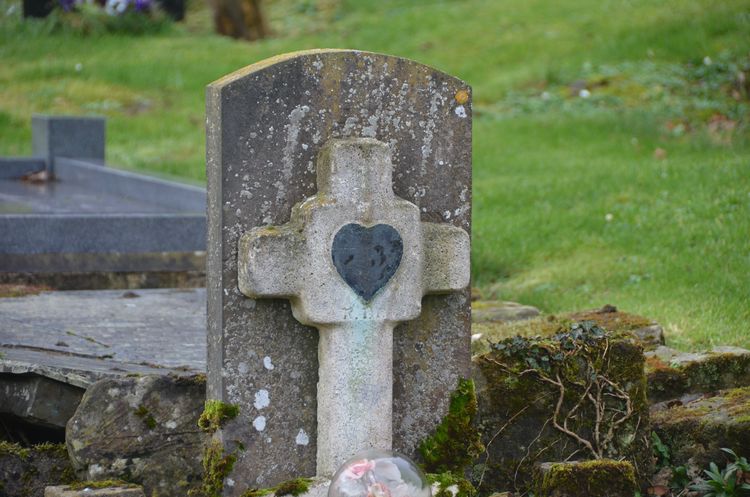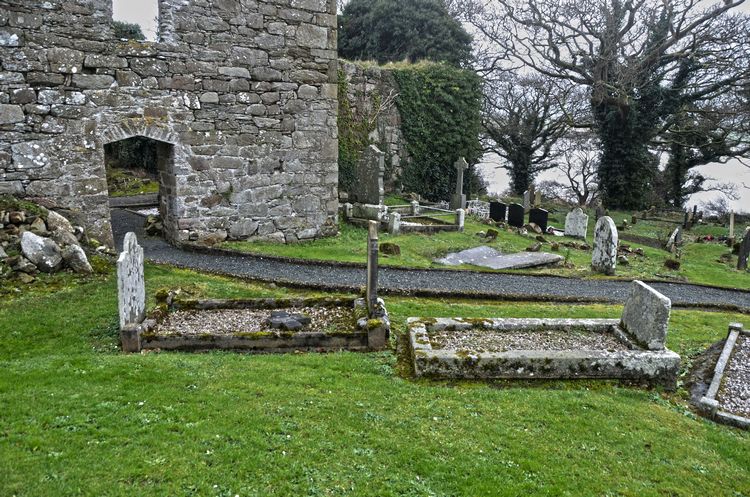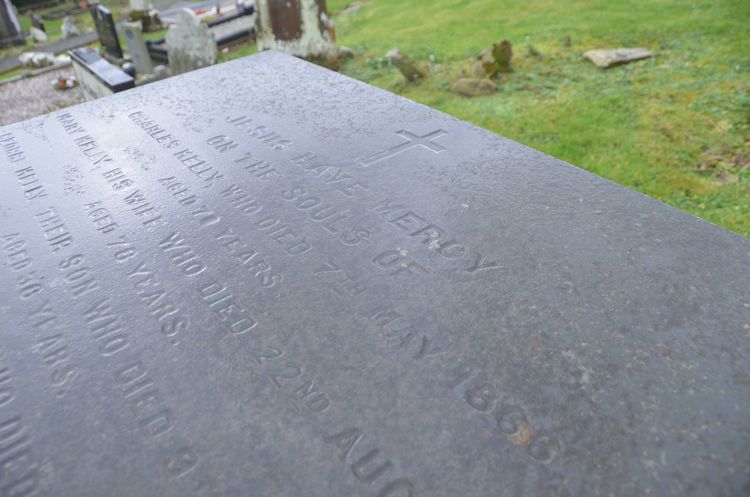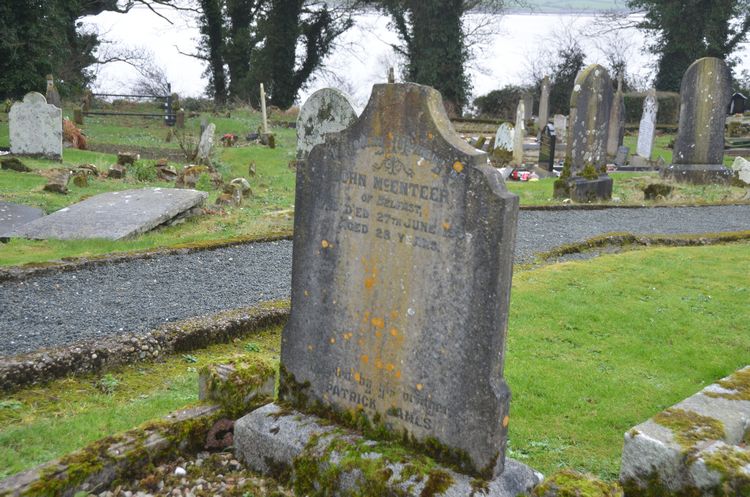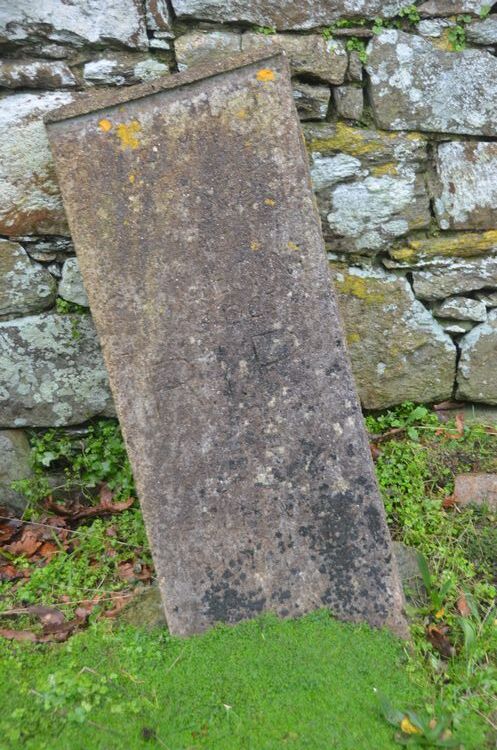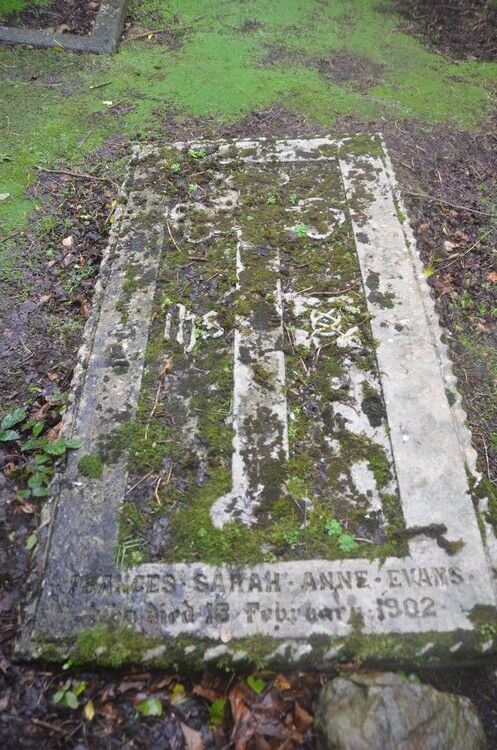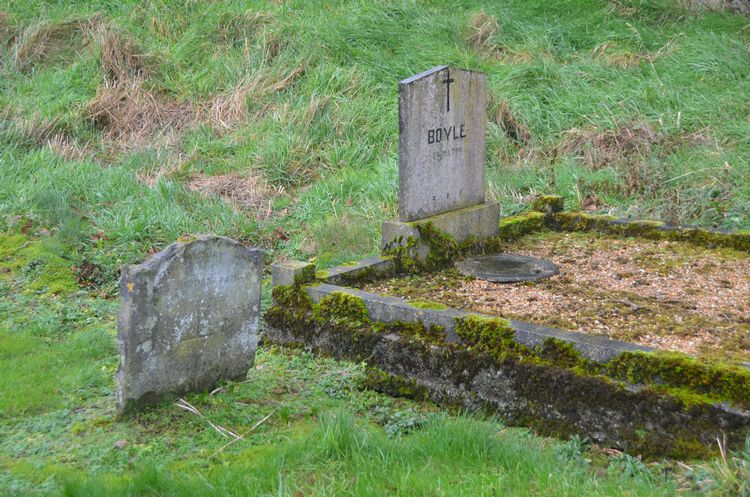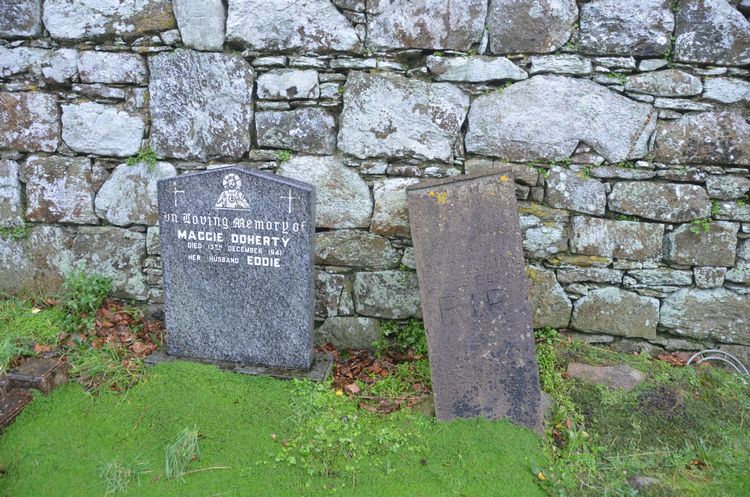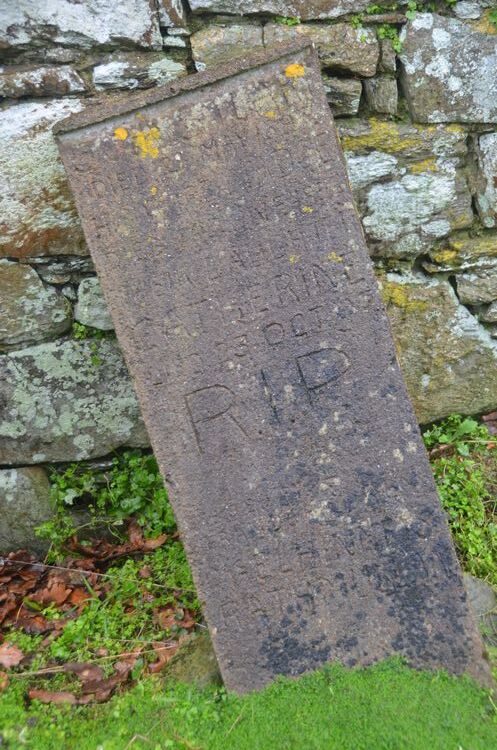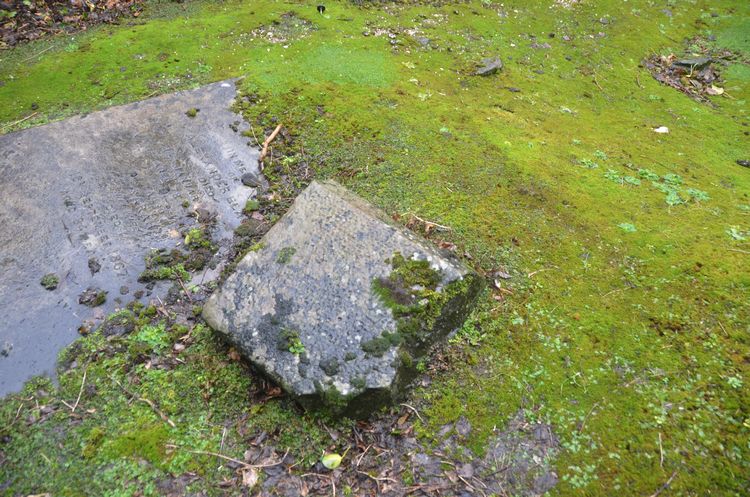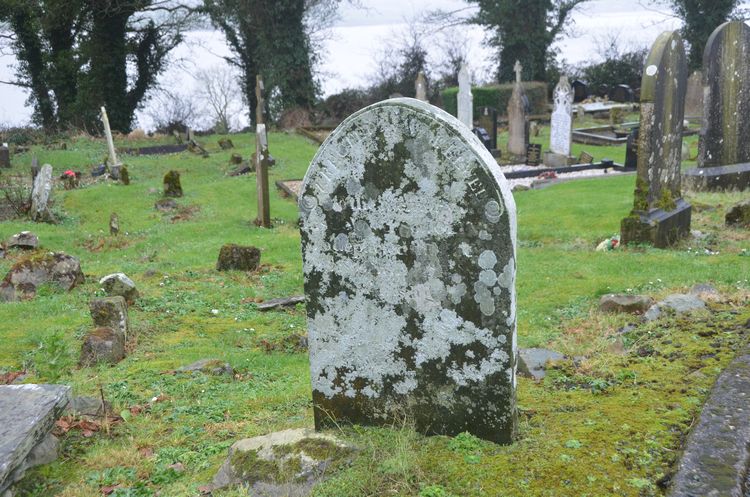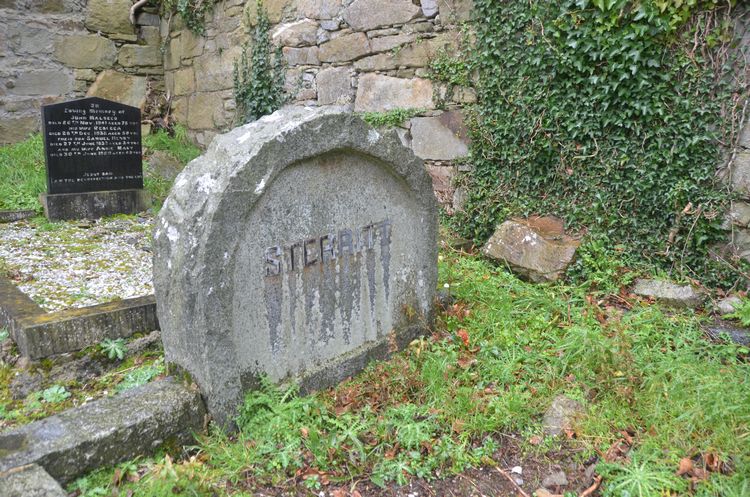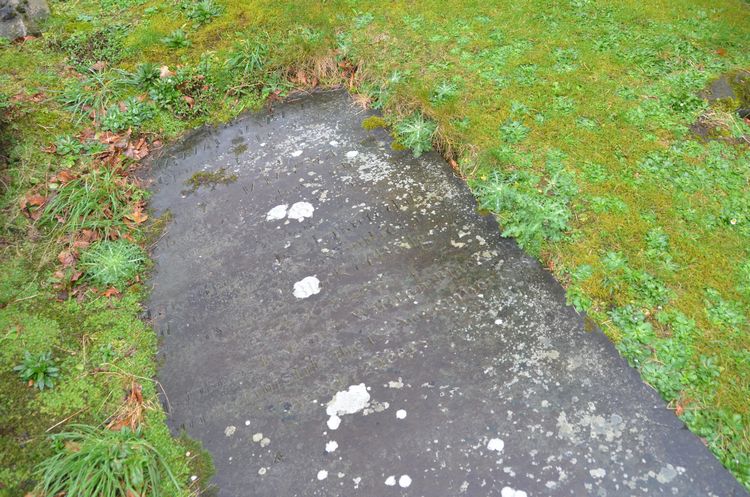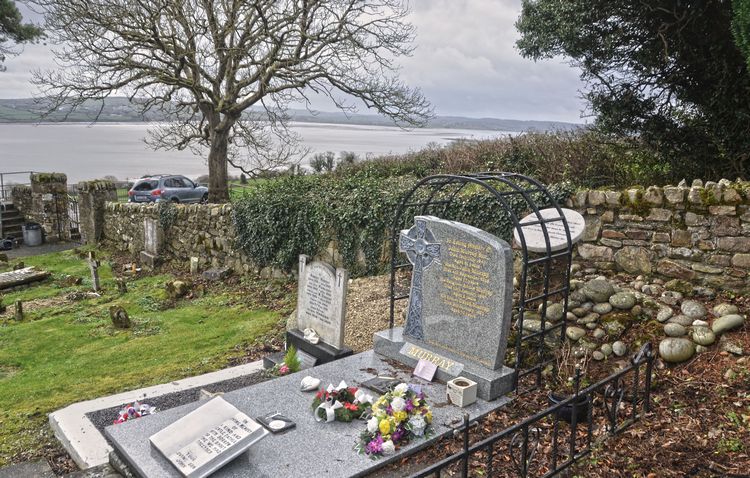KILLYDONNELL FRIARY
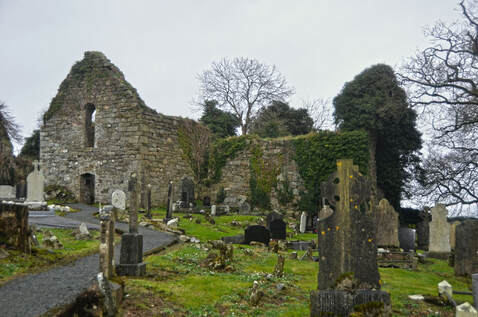
Killydonnell Friary and graveyard sits on the shores of Lough Swilly 12km/8 miles from Letterkenny and 5km/3 miles from Ramelton. The friary sits on the grounds of an earlier church which was built by the O’Tonners and there is archaeological evidence that the site may be a 10th century Viking settlement.
Killydonnell Friary was founded by Calvagh O’Donnell, the king of Tyrconnell and the uncle of Red Hugh O’Donnell. (Calbhach Ó Domhnaill, born c. 1515, died 26 November 1566),) for the Franciscans in 1471 on a grant of petition to Pope Sixtus IV by two Franciscan friars Dermit Magillacsbuig and Dermit Idurnyn.
The name Killydonnell Friary is taken from kil (cill), the Irish for church/graveyard (, (O’)Donnell, and friary: a building or community occupied by or consisting of friars.
The old ruins are still standing quite tall in places so you can see the basic shape of what it would have been like. Inside, as is the case of many if not all of these ancient monastic buildings, there are graves. At Killydonnell Friary too there are a number of vaults.
Killydonnell Friary was founded by Calvagh O’Donnell, the king of Tyrconnell and the uncle of Red Hugh O’Donnell. (Calbhach Ó Domhnaill, born c. 1515, died 26 November 1566),) for the Franciscans in 1471 on a grant of petition to Pope Sixtus IV by two Franciscan friars Dermit Magillacsbuig and Dermit Idurnyn.
The name Killydonnell Friary is taken from kil (cill), the Irish for church/graveyard (, (O’)Donnell, and friary: a building or community occupied by or consisting of friars.
The old ruins are still standing quite tall in places so you can see the basic shape of what it would have been like. Inside, as is the case of many if not all of these ancient monastic buildings, there are graves. At Killydonnell Friary too there are a number of vaults.
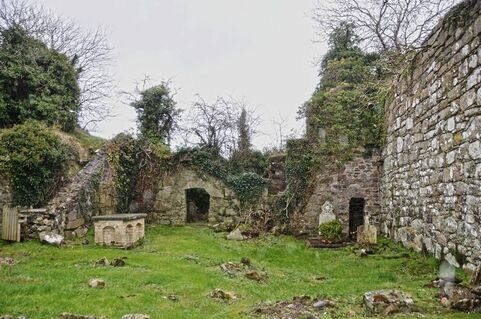 The original domestic areas of Killydonnell Friary
The original domestic areas of Killydonnell Friary
Two of the more open vaults can be seen in the transept area of the friary (the part to the right after you enter), and at the back, now closed off from the front side of the friary buildings in an enclosed vault lies the remains of the Stewart family of Fort Stewart who were landlords in the area at the time. You can see into this vault through a small opening in the wall at the part of the friary where the remains of old stone steps rise (to the left of the main entrance and at the back).
This part of the building would have been the domestic area for the friars and were originally two floors tall as is evidenced by the stone steps. At the steps, if you look upwards, you can see that there were further steps going on up.
There are more vaults to the far left of the back of the ruins in under an arched wall and to the right of this there are (closed off for safety) further stone steps which must have been internal at one time. I think these may be the steps that lead to a loft known locally in previous times as the ‘Green Loft’. Perhaps it was a lookout area given it looks over the Swilly?
This part of the building would have been the domestic area for the friars and were originally two floors tall as is evidenced by the stone steps. At the steps, if you look upwards, you can see that there were further steps going on up.
There are more vaults to the far left of the back of the ruins in under an arched wall and to the right of this there are (closed off for safety) further stone steps which must have been internal at one time. I think these may be the steps that lead to a loft known locally in previous times as the ‘Green Loft’. Perhaps it was a lookout area given it looks over the Swilly?
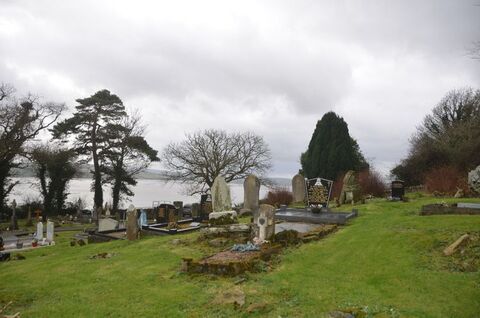 Killydonnell Friary graveyard overlooking Lough Swilly
Killydonnell Friary graveyard overlooking Lough Swilly
Throughout the grounds are many interesting gravestones and most are still quite legible. One of the more poignant is a more recent burial plot, that of one John Murray Jnr.
In the area behind the friary there is another graveyard where people are still buried to this day and you can see the rusty gate at the entrance to it from one of the window openings at the back of the friary. There is no access to the general public to this area.
In the field behind the friary there is a stone monument which marks the resting place of a man called Major Day who owned the land there some years back. It holds half his ashes, the other half being in Kenya.
On the information board outside it tells us that “In 1559 Calvagh O’Donnell and his wife were captured here and carried off into captivity by Shane, the Proud O’Neill.” During Calvagh O’Donnell’s entire captivity he was tortured by Shane O’Neill and his wife Catherine MacClean (who was his second wife) was forced to be Shane O’Neill’s mistress. Following the end of their imprisonment by Shane O’Neill, Catherine divorced Calvagh and went on to marry Shane and have several children with him.
In the area behind the friary there is another graveyard where people are still buried to this day and you can see the rusty gate at the entrance to it from one of the window openings at the back of the friary. There is no access to the general public to this area.
In the field behind the friary there is a stone monument which marks the resting place of a man called Major Day who owned the land there some years back. It holds half his ashes, the other half being in Kenya.
On the information board outside it tells us that “In 1559 Calvagh O’Donnell and his wife were captured here and carried off into captivity by Shane, the Proud O’Neill.” During Calvagh O’Donnell’s entire captivity he was tortured by Shane O’Neill and his wife Catherine MacClean (who was his second wife) was forced to be Shane O’Neill’s mistress. Following the end of their imprisonment by Shane O’Neill, Catherine divorced Calvagh and went on to marry Shane and have several children with him.
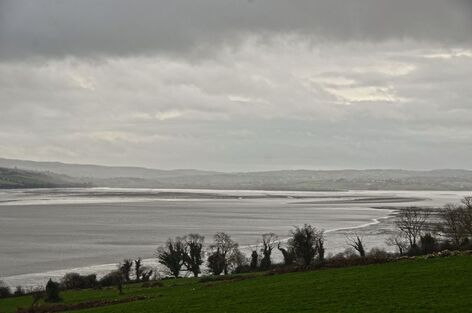 The view across Lough Swilly from Killydonnell Friary
The view across Lough Swilly from Killydonnell Friary
THE LEGEND OF THE KILLYDONNELL BELL
Legend has it that a group of raiders from Tyrone invaded the Killydonnell Friary and one of the items stolen was the bell.
They returned with their haul, including the bell, to their boat on the shores of Lough Swilly. A storm got up and the waters became choppy and dangerous rendering their small boat useless.
The boat sunk and all lives were lost. The bell is said to sit at the bottom of Lough Swilly where every seven years at midnight it tolls from its watery grave. A dark legend says that anyone who hears the bell tolling will be dead before the next time it tolls.
Legend has it that a group of raiders from Tyrone invaded the Killydonnell Friary and one of the items stolen was the bell.
They returned with their haul, including the bell, to their boat on the shores of Lough Swilly. A storm got up and the waters became choppy and dangerous rendering their small boat useless.
The boat sunk and all lives were lost. The bell is said to sit at the bottom of Lough Swilly where every seven years at midnight it tolls from its watery grave. A dark legend says that anyone who hears the bell tolling will be dead before the next time it tolls.
Later, during the ‘Plantation of Ulster’ when the English crown confiscated land from the Irish for their intention to colonise Ireland and put British occupants into the land and properties here during the 16th and 17th centuries, Killydonnell Friary was granted in 1603 to Captain Basil Brooke who closed the friary and who was also granted Donegal Castle and Lough Eske Castle.
|
INFORMATION
WHEELCHAIR ACCESS: Patrially. There is a path that goes from the entrance gates to the door way of the friary but that is as far as access goes. PARKING: There is a car parking area just outside the gates. LAVATORIES: No. ENTRANCE FEE: No. |
KILLYDONNELL FRIARY - Click on any of the images below to enlarge.
KILLYDONNELL FRIARY GRAVEYARD (OR CEMETERY) - click on any of the images below to enlarge.
